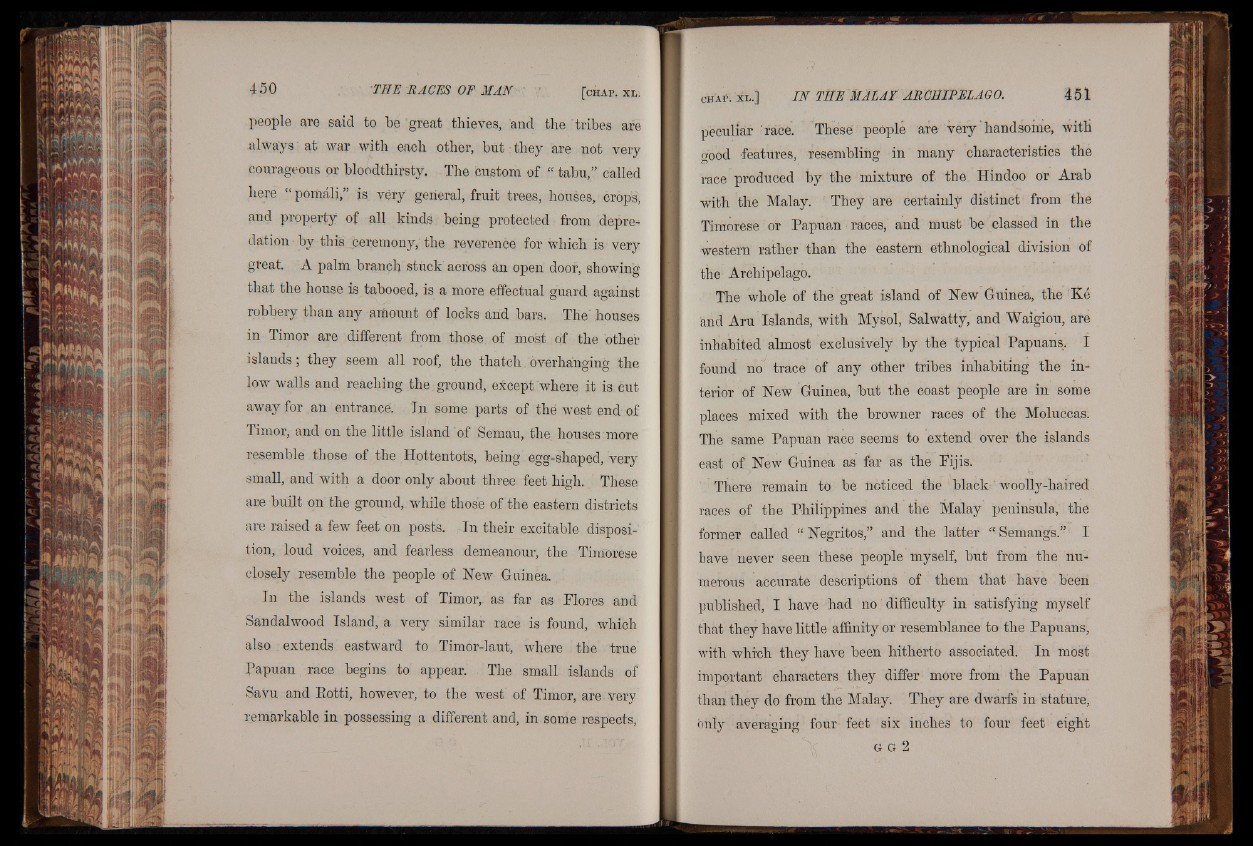
people are said to be great thieves, and the tribes are
always at war with each other, but • they are not very
courageous or bloodthirsty. The custom of “ tabu,” called
here “ pomdli,” is very general, fruit trees, houses, crops,
and property of all kinds being protected from depredation
by this ceremony, the reverence for which is very
great. A palm branch stuck across an open door, showing
that the house is tabooed, is a more effectuai guard against
robbery than any amount of locks and bars. The' houses
in Timor are different from those of most of the other
islands; they seem all roof, the thatch.overhanging the
low walls and reaching the ground, except where it is cut
away for an entrance. Tu some parts of thé west end of
Timor, and on the little island of Semau, the houses more
resemble those of the Hottentots, being egg-shaped, very
small, and with a door only about three feet high. These
are built on the ground, while those of the eastern districts
are raised a few feet on posts. In their excitable disposition,
loud voices, and fearless demeanour, the Timorese
closely resemble the people of New- Guinea.
In the islands west of Timor,, as far as Flores and
Sandalwood Island, a very similar race is found, which
also . extends eastward to Timor-laut, where the true
Papuan race begins to appear. The small islands of
Savu and Eotti, however, to the west of Timor, are Very
remarkable in possessing a different and, in some respects,
peculiar :race. These people are very'handsome, with
wood features, resembling in many characteristics the
race produced by the mixture of the Hindoo or Arab
with the Malay. They are certainly distinct from the
Timorese : or Papuan races, and must be classed in the
western rather than the eastern ethnological division of
the Archipelago.
The whole of the great island of New Guinea, the Ke
and Aru Islands, with My sol, Salwatty, and Waigiou, are
inhabited almost exclusively by the typical Papuans. I
found no trace of any other tribes inhabiting the interior
of New Guinea, but the coast people are in some
places mixed with the browner races of the Moluccas.
The same Papuan race seems to extend over the islands
east of New Guinea as far as the Fijis.
There remain to be noticed the black woolly-haired
races of the Philippines and the Malay peninsula, the
former called “ Negritos,” and the latter “ Semangs.” I
have never seen these people myself, but from the numerous
accurate descriptions of them that have been
published, I have had no difficulty in satisfying myself
that they have little affinity or resemblance to the Papuans,
with which they have been hitherto associated. In most
important characters they differ more from the Papuan
than they do from the Malay. They are dwarfs in stature,
only averaging four feet six inches to four feet eight
a g 2